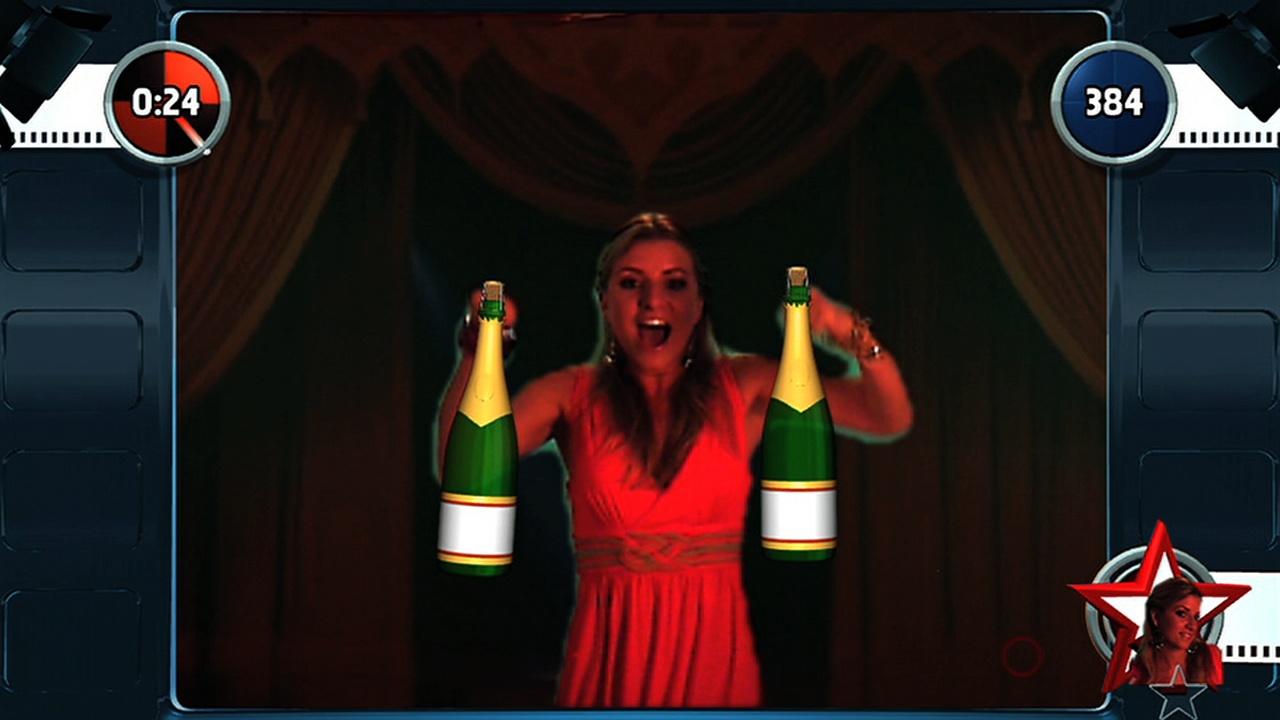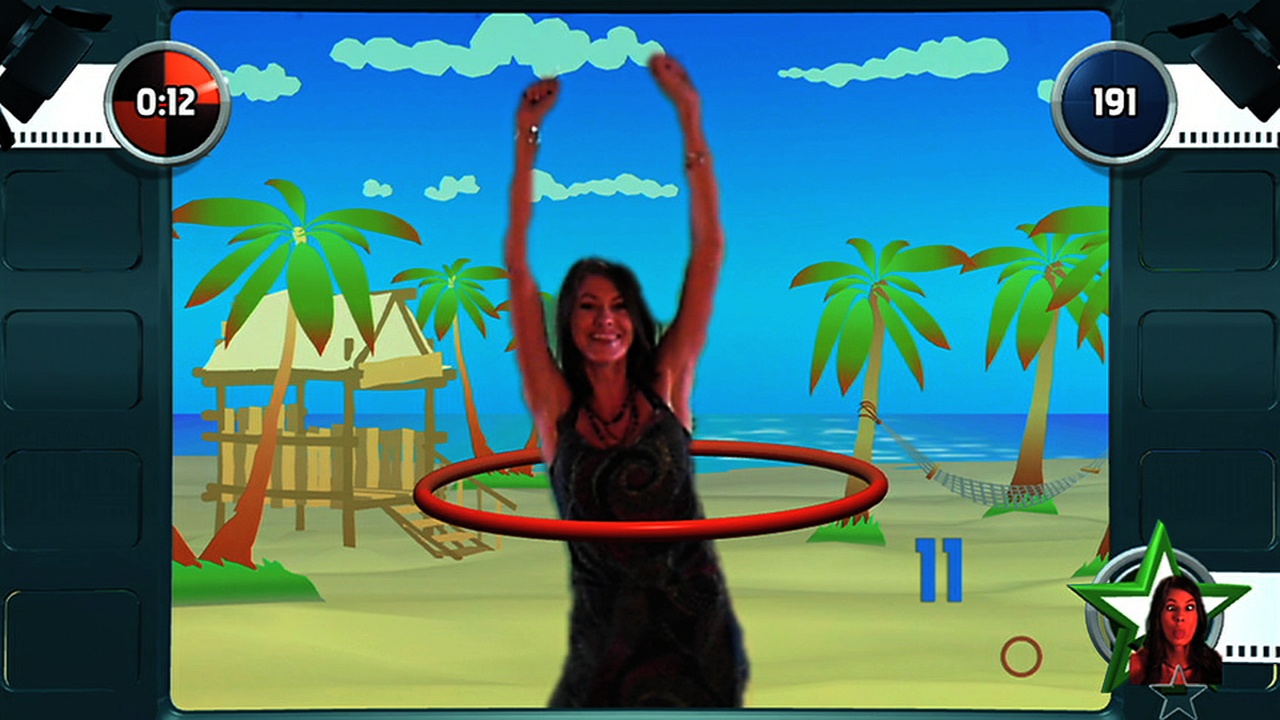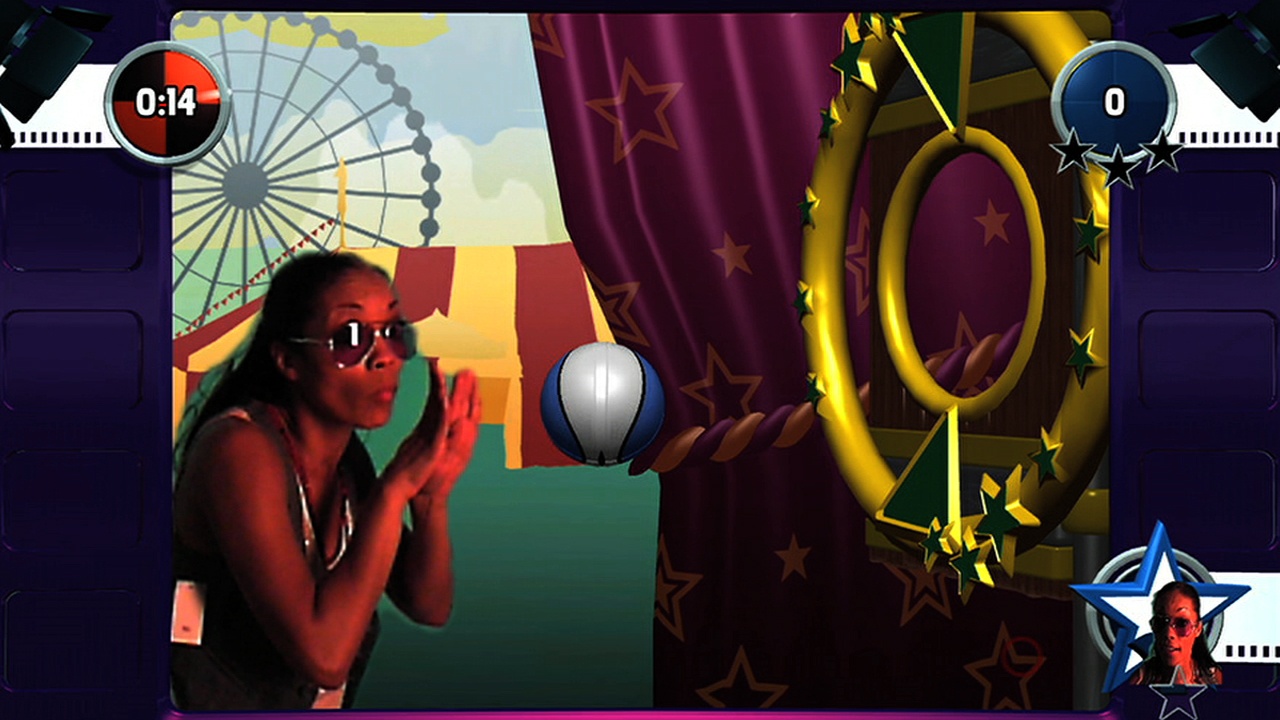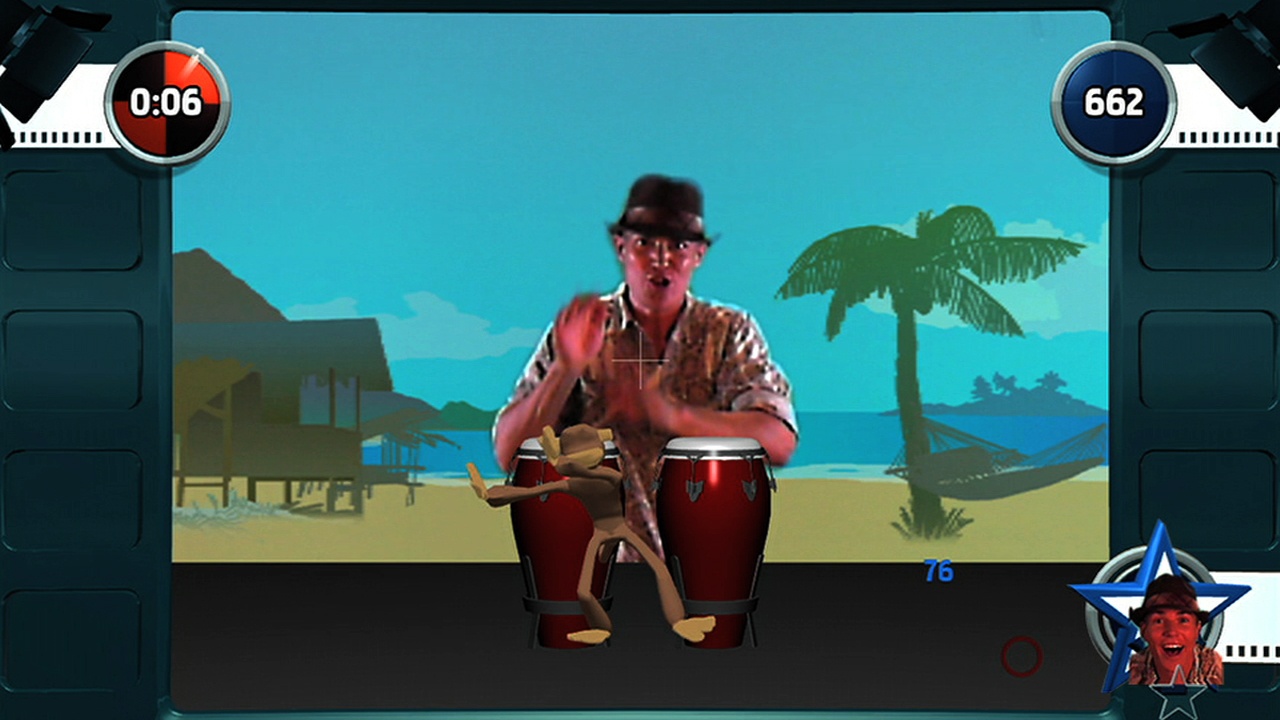You're in the Movies Q&A
You're in the Movies lead designer, Andy Trowers, tells us about how it all began.
You're in the Movies puts you in front of the Xbox Live Vision Camera so that you can dance, flail, cry, and laugh to make your very own Hollywood-style B movie. Up to four players can get together and play the 45 minigames designed to get you off of the couch and right into the action. The vision cam will capture your movements and photos, and then put them in a scripted movie at the end, which you can then download and send to your friends. We had the opportunity to speak with Andy Trowers, leader designer at Zoe Mode, an independent developer based in London, about how this idea got started and how the technology works.
GameSpot: You're in the Movies is certainly a different take on the usual party game. How did this project begin?
Andy Trowers: It's actually a project that started with the technology. We had a lot of experience with camera games previously, and we basically developed this technology where you can cut people out from the background and place them into different situations. So we thought about how we could put this to its best use. The idea that we came up with, after sitting around discussing things that work, was movies. We all love movies and we thought this was a perfect fit. People were talking about this virtual green-screen technology and that kind of that triggered off the idea that, "Why don't we cut people out and put them into their own film?"
GS: What were your first steps in development?
AT: The first thing we had to do, really, was prove that it all worked. We made what's called a "vertical slide" of the game, where we made one movie and we thought about all the games that would make the actions. The whole of the first part of the development was about getting the vertical slide that worked and showed that the game was fun, showed that the technology works, and that was it.
GS: What kind of challenges did you face during the development of the game?
AT: This is obviously something that hasn't been done before, so there are a lot of challenges getting the technology working and in terms of the game design as well. You've got to make games that are fun. At the same time, you've always got to have one eye keeping an eye on the movie side as well, ensuring that you have fun games that give you the actions that you need for the movies. So that was really challenging, but a really enjoyable aspect of the development.
There were two main things: the segmentation technology and the creative aspect of it--coming out with things that are fun, coming up with enough variety. We've got loads of genres in there, from horror movies to sci-fi movies. Coming up with all of those different things and coming up with the games as well, making the two things kind of intermix, so keeping an eye on that, the management of that, and making sure everything worked was a challenge.
GS: How does the cutout technology work using the Xbox Live vision cam?
AT: We take a picture of the background at the stage where everyone will have to clear off the set, and we keep that picture in memory. Every few seconds we poll the screen and see how that picture has changed. Basically, if there's something that doesn't match up to the picture that we have saved in memory, we know that's foreground, and then we can cut that out and put that anywhere. So that's how we know that people have come back on the screen, they're different from the background so therefore they must be part of the foreground.
GS: When you start the game, there are several cutout modes. What do the cutout modes do?
AT: One of the modes deal with shadows better than the others, so if there are shadows on the back wall, it sort of neutralizes those a little bit more. We wanted to get people to see the modes and see which one works better in the situation that they're in.
GS: There are some concerns about the camera working in various situations. What would be the ideal set up?
AT: That's definitely something we want to get right, so we will be releasing some troubleshooting tips on the Web for people. My biggest tip would be make sure that there is a lot of light, overhead light is good as the main light source of the room. The biggest problem people are facing is shadows on the back wall, so if they can minimize shadows on the back wall, then they shouldn't have any problems at all.

GS: Could you tell us about content sharing in the game and how it works? Sharing is only done through e-mail, was there a reason behind this?
AT: We always wanted people to be able to share the movies. Your friends might come around and play the game, and you're going to want to send them the file afterward. You might share it with your friends for laughs anyways. The focus of the game is very much on having fun and people being a bit silly. Sharing that with your friends is a good thing to do, so that was the driving force behind it. We really wanted people to be able to say, "Hey look, guys, look at the movie I made, it was a lot of fun." Once you save your movie, it uploads to a Web site which will then download it to your PC and you'll have the file as a .wmv, which you can share with anyone and do what you want with it.
We wanted to give people the freedom to do what they wanted. We didn't want to have one restricted space where people had to go to put their film. You want to give people the freedom to do what they wanted with the file, where they're sending it or putting it up on their own Web site or whatever.
GS: How did you come up with all the themed scripts and minigames?
AT: That was really the creative-design team, that are a really good bunch of game designers and cinematics guys who sat down and came up with the idea. We watched a lot of old B movies and trailers to get the inspiration, to give that old Hollywood B-movie feel, so we just watched a lot of films.

GS: Were the minigames created based on what actions you needed for the script? Or were there other deciding factors?
AT: It was quite an organic process, really. Sometimes we'd have a movie and we'd say OK, we want the player to do this in the scene, which is the action we want, so try to think of a game idea for this. But other times we'd be thinking, "Oh, you know what, we got this great idea for a game and these are the essential actions we can get out of it, how are we going to use it in movies?" So it was really a three-way process, trying to figure out what we could get people to do, what would be fun, how it would fit in the movie--it wasn't just one process of doing it, it had to go both ways.
GS: What kind of audience are you targeting at with You're in the Movies?
AT: It's quite broad, really, I'd say. We started out with an idea that the users are going to be fairly old, but then as we sort of made the game we focused it. We realized that lots of different people get fun out of the game in lots of different ways. We tested on young kids, we tested on adults, we tested on a mix of the two, and we came to the conclusion that anyone can play this game. We very much wanted the game to be accessible from the start so that you can play alongside your granny or with your kids. We saw people enjoying it from all ages.
GS: Is there something for core gamers as well?
AT: This is something for people to come together and share their gaming experience. Any core gamer would like to have at least a few games in their library that are they can play when people come around. This is definitely something that core gamers can share their gaming experience with their friends and perhaps get people who aren't core gamers, to get them more interested in what they do as a hobby. So I definitely think there will be something for those guys as well.
GS: Were there any ideas or features that didn't make it in the game?
AT: We had a few more movie ideas that may see the light at another stage. The content that you see in the game is what we wanted from the outset.
GS: There is a growing trend in the industry to include minigames, user-generated content, and potential for downloadable content. Were these features in mind when you started the process?
AT: We always had one eye to that. We wanted to expand the actual user experience. It's not just about you get a game, you play it, and then that's it, it's finished. It's something that gives real value to players as well, and so it's something we thought of from the start.
GS: Thank you for you time.
Got a news tip or want to contact us directly? Email news@gamespot.com


Join the conversation